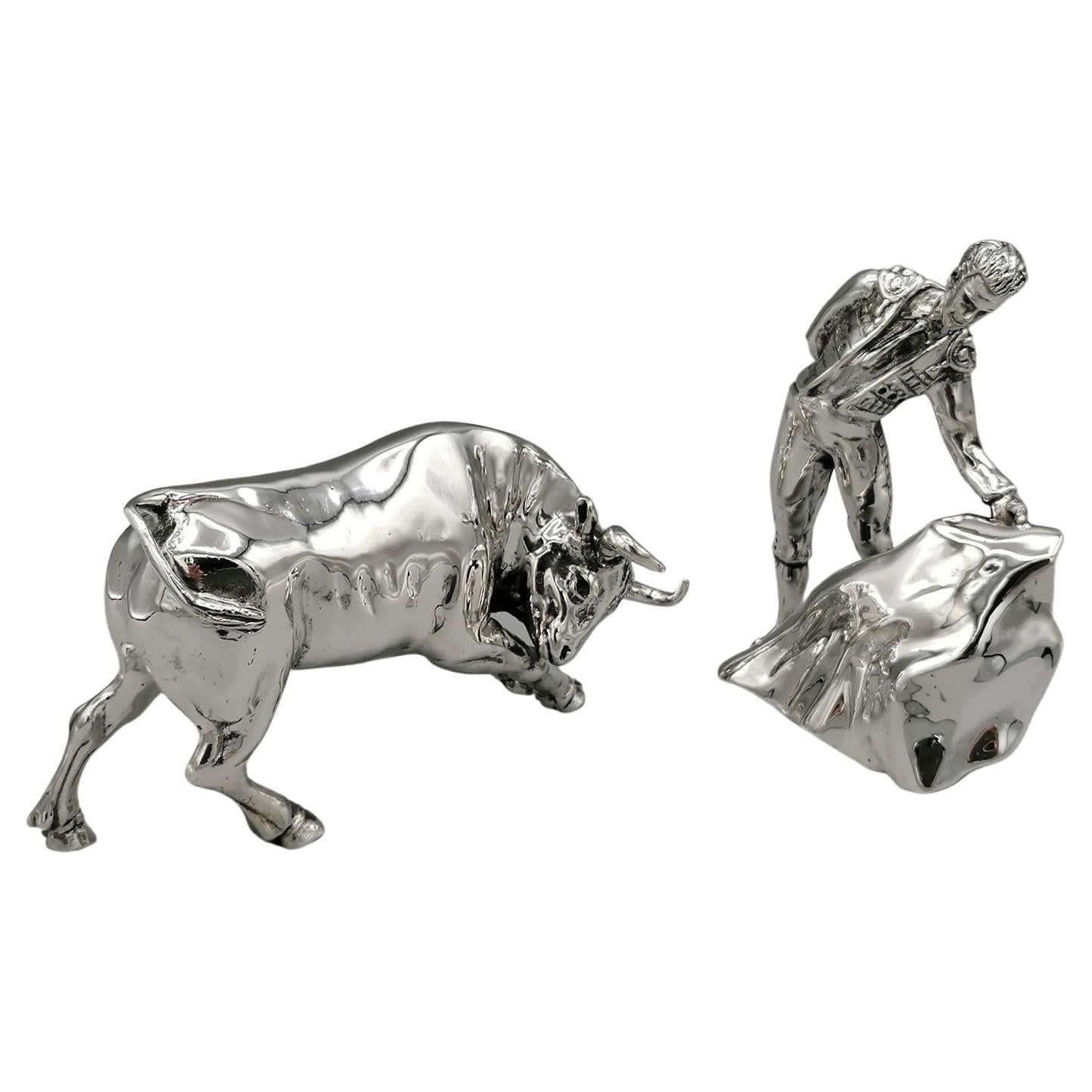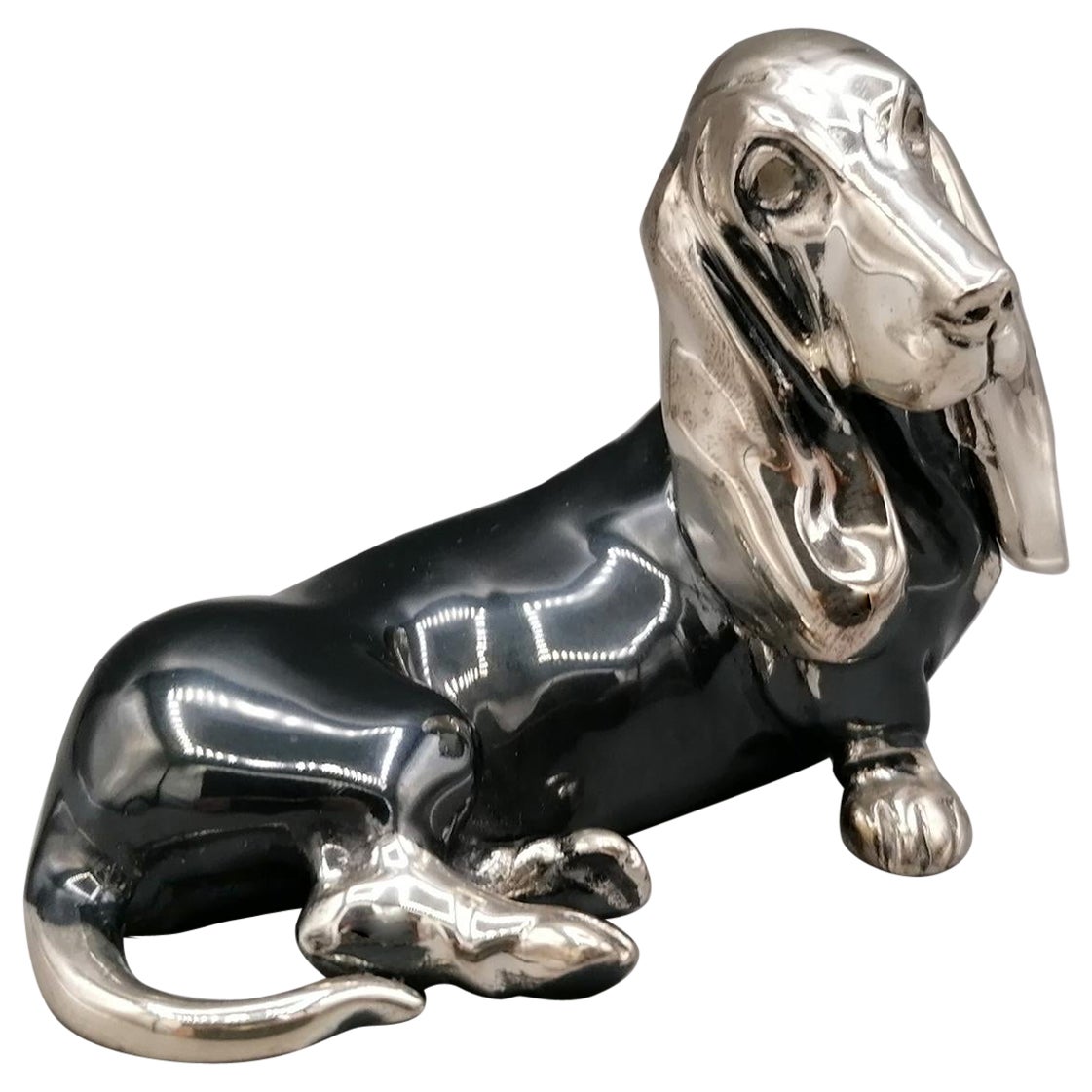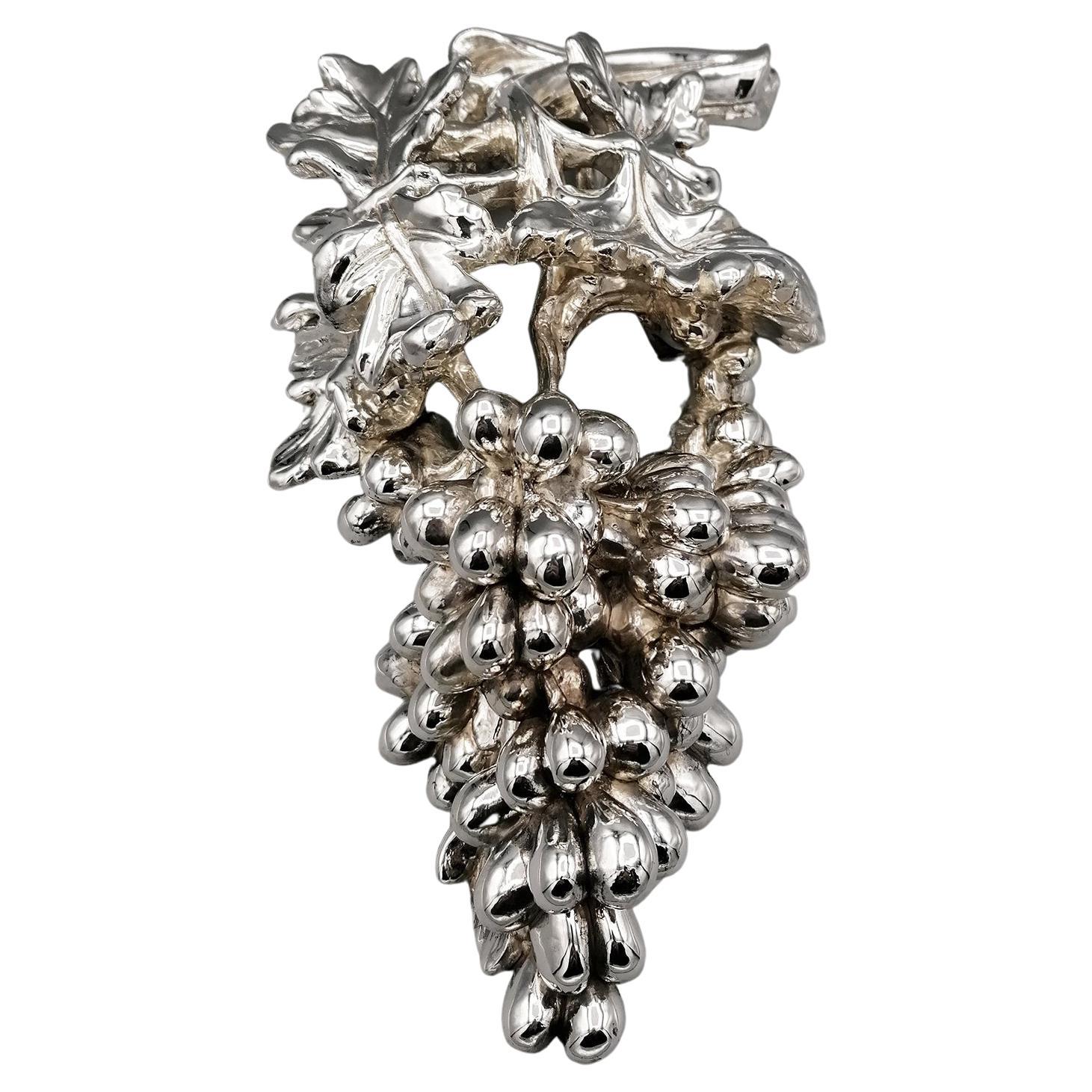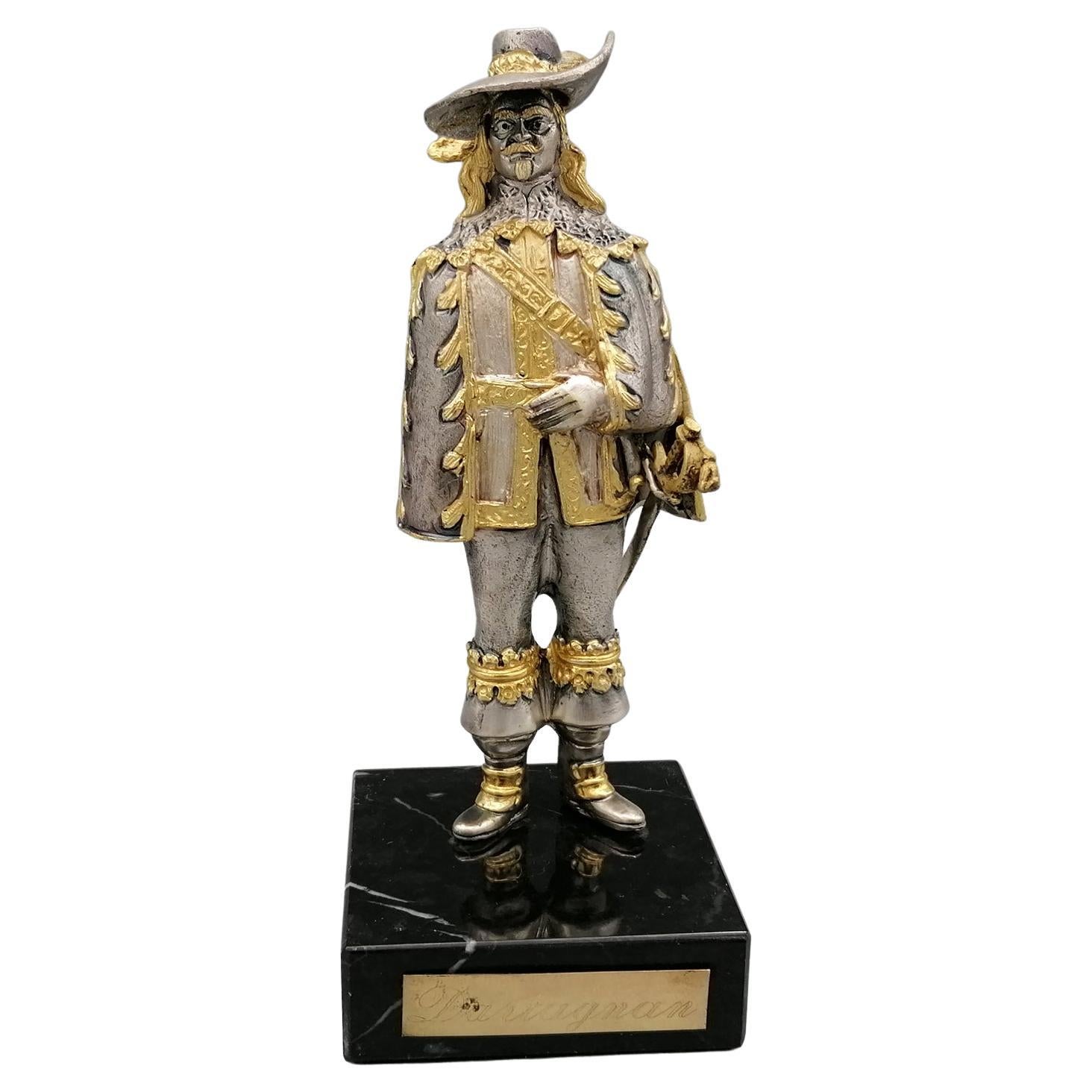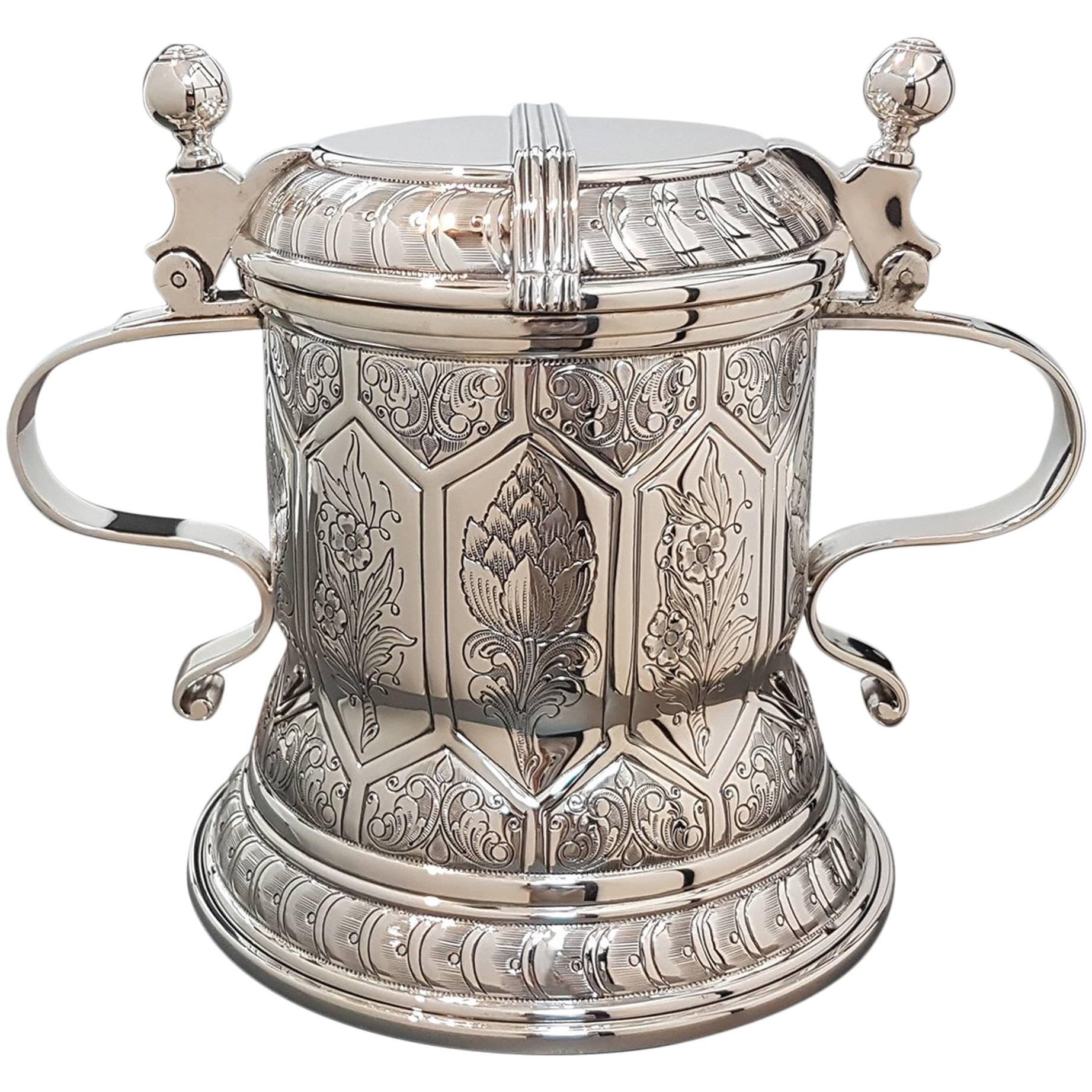Items Similar to 20th Century Italian Sterling Silver German Shepherd Dog Sculpture
Video Loading
Want more images or videos?
Request additional images or videos from the seller
1 of 12
20th Century Italian Sterling Silver German Shepherd Dog Sculpture
About the Item
German Shepherd dog sculpture in sterling silver.
The sculpture of the German Shepherd dog was made with the 925 sterling silver casting method and masterfully finished with chisel which makes the details perfect.
By Argenteria Sorini - Arezzo - Italy
for Arval Argenti Valenza.
- Creator:Arval Argenti Valenza (Retailer)
- Dimensions:Height: 4.73 in (12 cm)Width: 6.3 in (16 cm)Depth: 1.19 in (3 cm)
- Style:Other (In the Style Of)
- Materials and Techniques:
- Place of Origin:
- Period:
- Date of Manufacture:1995
- Condition:
- Seller Location:VALENZA, IT
- Reference Number:1stDibs: LU2619326083722
About the Seller
5.0
Platinum Seller
These expertly vetted sellers are 1stDibs' most experienced sellers and are rated highest by our customers.
Established in 1967
1stDibs seller since 2017
110 sales on 1stDibs
Typical response time: <1 hour
- ShippingRetrieving quote...Ships From: VALENZA, Italy
- Return PolicyA return for this item may be initiated within 3 days of delivery.
More From This SellerView All
- 20th Century Italian Solid Silver Camel SculptureBy Arval Argenti ValenzaLocated in VALENZA, ITSolid 800 silver camel. The sculpture was made with the casting technique and then finished completely by hand by expert chisellers to make the camel's f...Category
Vintage 1980s Italian Other Animal Sculptures
MaterialsSilver
- 20th Century Italian Sterling Siver Bull and Bullfighter SculptureBy Arval Argenti ValenzaLocated in VALENZA, ITSolid sterling silver bull and bullfighter miniature. Both the bull and the bullfighter were made with the casting technique and then chiseled to bring out the details. The precisi...Category
Vintage 1980s Italian Other Figurative Sculptures
MaterialsSterling Silver
- 20th Century Solid Silver Sculture Depicting a Basset Hound DogBy Arval Argenti ValenzaLocated in VALENZA, ITBasset hound dog sculture in 800 solid silver. The object was made with the technique of fusion in two halves and subsequently joined by welding. In th...Category
Vintage 1980s Italian Other Animal Sculptures
MaterialsSilver
- 20th Century Italian Pure 990 Silver Grape BunchBy Arval Argenti ValenzaLocated in VALENZA, ITItaly, a country that produces great wines and an ancient agricultural tradition, could not fail to dedicate its art also to create prestigious objects concerning this excellence for...Category
Late 20th Century Italian Other Natural Specimens
MaterialsSterling Silver
- 20th Century Italian Solid Silver Miniature Reproducing D'artagnanBy Arval Argenti ValenzaLocated in VALENZA, ITMiniature in solid 800 silver reproducing D'Artagnan The miniature was made of solid silver with the fusion technique and subsequently finished with a chisel. The final finish was in natural, burnished silver and with 24kt gold details. Marble base By Geca Silversmith - MIlan - Italy for ARVAL ARGENTI VALENZA Silver statuette representing Charles de Batz-Castelmore, comte d'Artagnan. In 1630, aged about 20, he went to Paris to join the French Guards on the recommendation of a relative of his mother, the lord of Tréville, who also appears in Dumas' novels as his protector . It was at this time that the young Charles decided to adopt the surname d'Artagnan, that of his mother's family. The paternal branch in fact belonged to the bourgeoisie, and Charles preferred to use the surname that would have given him more prestige. Thus it was that the royal d'Artagnan did 15 years of military service until Cardinal Mazarin...Category
1990s Other Figurative Sculptures
MaterialsSilver
- 20th century Italian Sterling Silver Tankard german revival. Made in ItalyBy Arval Argenti ValenzaLocated in VALENZA, ITGerman style sterling silver mug. The cylindrical signature body with the lower part with larger diameter steps to ensure stability. Two plate handles make it safe to hold with two h...Category
Late 20th Century Italian Other Sterling Silver
MaterialsSterling Silver
You May Also Like
- Attributed to Buccellati, 20th Century Sterling Silver CapercaillieBy BuccellatiLocated in North Miami, FLPresenting a remarkable 20th-century silver capercaillie sculpture, exquisitely attributed to the distinguished Buccellati workshop. This piece captures the essence of the capercaill...Category
20th Century Italian Animal Sculptures
MaterialsStone, Sterling Silver
- Pair of 20th Century Silver PheasantsLocated in Los Angeles, CAPair of 800 silver pheasants. Gold vermeil. European (probably Austria).Category
Early 20th Century Austrian Sterling Silver
MaterialsSilver
- Pair of 20th Century German Silver Swan Drawn Chariot with Robed Driver StampedLocated in North Miami, FLPair of 20th century German silver swan drawn chariot with robed driver stamped, marked "CD 900". Accompanied by a similar German silver swan drawn chariot with fairy driver, marked ...Category
20th Century Russian Sterling Silver
MaterialsSilver, Sterling Silver
- 20th Century Gio Ponti Lino Sabattini Sculpture Horse in Silver Metal End '70sBy Gio Ponti, Lino SabattiniLocated in Turin, TurinStatue in silver metal designed by the Maestro Gio Ponti and produced for Lino Sabattini since the end of '70s. The sculpture is in silver metal and represents a horse. This example ...Category
Vintage 1970s Italian Mid-Century Modern Animal Sculptures
MaterialsMetal
- Mario Buccellati Italian 925 Sterling Silver St Bernard's Dog FigurineBy Mario BuccellatiLocated in Braintree, GBMario Buccellati Italian 925 sterling silver St Bernard's dog sculpture. Made in Italy, circa 1950s Fully hallmarked. The silver sculpture of a St. Bernard dog with a barrel ar...Category
Vintage 1950s Italian Sterling Silver
MaterialsSterling Silver
- 19th Century Italian Sterling Silver Madonna, circa 1830Located in Milano, ITEmbossed and engraved silver plaque La Madonna del lago (The Madonna of the Lake) Probably Milan, post 1824 Brass frame It measures 16.14 in x 13.85 in (41 x 35.2 cm) and it weighs 10.357 pounds (4.698 g): silver 1.31 pounds (598 g) + brass 9.03 pounds (4.100 g) State of conservation: some abrasions on the bottom. The frame is old, but not original. The plaque is made up of a sheet of embossed and engraved silver, and held in a solid brass frame. It depicts the “Madonna del lago” – “Madonna of the Lake” - (the Madonna with Child and San Giovannino) by Marco d'Oggiono (Oggiono, 1474 circa - Milan, 1524 circa), while changing only the background landscape. Almost certainly the subject reproduced in the plaque was taken from a famous engraving by Giuseppe Longhi (Monza, 1766 - Milan, 1831), one of the greatest engravers of his era. The silver is unmarked, probably because originally the Madonna was due to be exposed in a church: sometimes precious metals destined for worship and liturgical use would be exempted from payment and were, therefore, not marked. It is very likely that the plaque was made in Milan because in this city in 1824 the engraving by Giuseppe Longhi was made and printed. In addition, in Milan, the alleged lost painting by Leonardo da Vinci in his Milanese period (1482-1500) would be produced; this is the painting from which Marco d'Oggiono took his version. The painting Marco d?Oggiono was one of Leonardo da Vinci's most brilliant students and collaborators (D. Sedini, Marco d’Oggiono, tradizione e rinnovamento in Lombardia tra Quattrocento e Cinquecento, Roma 1989, pp. 151-153, n. 56; p. 225, n. 124, with previous bibliography). His style reflects in every way that of the Tuscan Maestro, so much so that he was the one who executed some copies of da Vinci's paintings. The execution of the “Madonna del Lago” probably draws inspiration from a lost painting by the Maestro, created while he was living in Milan (1482-1500). There are many similarities with other works by Leonardo such as the “Vergine delle rocce” or the “Vergine con il Bambino e San Giovannino, Sant’Anna e l’Agnello”. The painting, from which the drawing and then the famous engraving were taken, is found today at the M&G Museum of Bob Jones University in Greenville, South Carolina, where it came to rest after the sale of the Harrington Collection in London in 1917. The work appears in the inventories of the collection of Napoleon and Joséphine Bonaparte at the castle of Malmaison, before 1809. The Malmaison building was born and developed in the 17th and 18th centuries. In the 18th century it belonged to Jacques-Jean Le Coulteux du Molay, a wealthy banker. Later, during the Directory, Joséphine Bonaparte de Beauharnais bought it on April 21st, 1799, but settled at the castle definitively only after her husband separated from her in 1809. She remained there until 1814, the year of her death. When Joséphine died, the estate passed to her son Eugène de Beauharnais, who moved to Munich with his whole family in 1815, bringing with him the collection of paintings he inherited from his mother. Eugène died in 1824 and his wife Augusta of Bavaria (von Bayern), unable to keep it, in 1828 sold the Malmaison to the Swedish banker Jonas-Philip Hagerman. It is likely that in this period Augusta also sold part of the paintings inherited from her husband, including the “Madonna del Lago”. This painting then came into the possession of Leicester Stanhope, fifth Earl of Harrington (1784 - 1862) and then was passed down to his descendants. In 1917, at the death of Charles, eighth Earl of Harrington, his brother Dudley inherited the title and properties and he put up a part of his collections for sale. Among these, precisely, the painting by Marco d'Oggiono was to be found. On the occasion of that auction the painting was presented as a work by Cesare da Sesto, by virtue of a handwritten note by the Countess of Harrington on the back of the table. However, already in 1857, the German critic Gustav Waagen had identified Marco d'Oggiono as the author of the painting, then exhibited in the dining room of Harrington House in London (Treasures of Art in Great Britain, in 4 volumes, London, 1854 and 1857). The engraving Giuseppe Longhi was one of the most renowned engravers in Italy between the end of the 18th century and the first quarter of the 19th century. In 1824 Giuseppe Longhi, based on a design by Paolo Caronni, made a famous engraving of the painting of Marco d?Oggiono. The activity of Longhi was then at the peak of his notoriety, enough to earn him very substantial commissions; it is not risky to suppose that some of his successful engravings were also reproduced using other means: in our case in silver. (A. Crespi, a cura di, Giuseppe Longhi 1766–1831 e Raffaello Morghen...Category
Antique 1820s Italian Neoclassical Sterling Silver
MaterialsSterling Silver, Brass
Recently Viewed
View AllMore Ways To Browse
Sterling Silver Germany
Silver Animals Sterling
Sterling Dog
Sterling Silver Dog
German Shepherd
German Shepherds
Silver Dog Sculpture
Shepherd Dog
Arezzo Vintage
German Shepherd Sculpture
German Shepherd Vintage
German Shepherd Dog
Vintage Carved Fish
Foo Lion
Foo Lions
Iron Bear
Equestrian Decorative Objects
Patinated Bronze Lion

